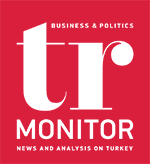At least 3,381 people were killed, and 20,426 others were injured in 10 provinces of Turkey due to two strong earthquakes that jolted the southern part of the country yesterday. 5,775 buildings were confirmed to be demolished. Early Monday morning, a powerful magnitude 7.7 earthquake struck the Pazarcik district of Kahramanmaras province and strongly shook several other provinces, including Gaziantep, Sanliurfa, Diyarbakir, Adana, Adiyaman, Malatya, Osmaniye, Hatay and Kilis. Then at 13.24 p.m., a 7.6 magnitude quake centered in Kahramanmaras’s Elbistan district struck the region.
Turkey has declared a fourth-level alert state, which includes an international call for help. Apart from the condolences from world leaders and organizations such as the United Nations, many countries, including the U.S., Russia, and 17 European Union states have started to provide search and rescue teams to Turkey, while 62 teams from 50 countries offered help.
The country will observe seven days of national mourning after deadly earthquakes hit several southern provinces, President Recep Tayyip Erdogan announced yesterday. Schools will remain closed until February 13 across the country.
The business world has been mobilized to deliver aid in coordination with the regions that were damaged by earthquakes. Chairpeople of the leading organizations of the business world gave the message to unite forces towards disaster-hit provinces. The Union of Chambers and Commodity Exchanges of Turkey (TOBB), the Union of Turkish Agricultural Chambers, and labor confederations convened to discuss the immediate aid to be delivered to earthquake zones.
Today, Republican People’s Party (CHP) Chairman Kemal Kilicdaroglu will visit Hatay with the Mayor of Istanbul Ekrem Imamoglu, the Mayor of Ankara Mansur Yavas, and the Mayor of Izmir Tunc Soyer.
154 hotels in the earthquake zones and neighboring provinces freely opened their 700 rooms for earthquake victims.
The Central Bank has decided to extend the maturities for repayments of rediscount credits and advance loans against investment commitment for companies in the earthquake zone, according to a statement from the bank. Here is the decision for companies based in the earthquake and disaster-hit regions (Adana, Adiyaman, Diyarbakir, Hatay, Gaziantep, Kahramanmaras, Kilis, Malatya, Osmaniye, Sanliurfa):
- An interest-free maturity extension of up to 180 days has been granted for repayment of rediscount credits for export and FX-earning services as well as advance loans against investment commitment with a due date between 6 February 2023 (included) and 30 April 2023 (included)
- An additional export and FX-earning services commitment fulfillment duration of six months has been introduced for those rediscount credits for export and FX-earning services that were used before 6 February 2023 (included)
Moreover, the bank also has instructed the member banks of the Banks Association of Turkey (TBB) and the Participation Banks Association of Turkey (TKBB) not to charge fees for money transfers to earthquake donation accounts, particularly to aid organizations such as AFAD (Disaster and Emergency Management Authority) and Kizilay (Turkish Red Crescent).
Turkish Airlines has stabilized the prices for all flights from Adana, Diyarbakir, Sanliurfa, and Elazig to Istanbul at TRY 100 including taxes, until February 13 in order to support the work in the earthquake-hit regions.
DAILY AGENDA
The Treasury and Finance Ministry will release the Treasury cash realizations for January (5.30 p.m.).
Meanwhile…
>> Turkey’s population rose to 85.28 million in 2022, up by 599,280 from the previous year, according to the Turkish Statistical Institute (TurkStat). The male population was 42.7 million or 50.1% of the total, while women made up 49.9% or 42.6 million in 2022. The annual population growth rate slowed to 7.1 per thousand in 2022, down from 12.7 per thousand in 2021.
>> The consolidated net sales of the glass company Sisecam amounted to TRY 95.3bn last year. The firm’s exports from Turkey reached USD 1.1bn in 2022.
READ A SELECTED ARTICLE FROM OUR MAGAZINE:
>> Why did the Treasury borrow 2.5 times higher than the need?
Our Critical Angle Columnist Ismet Ozkul examines the central government budget.










